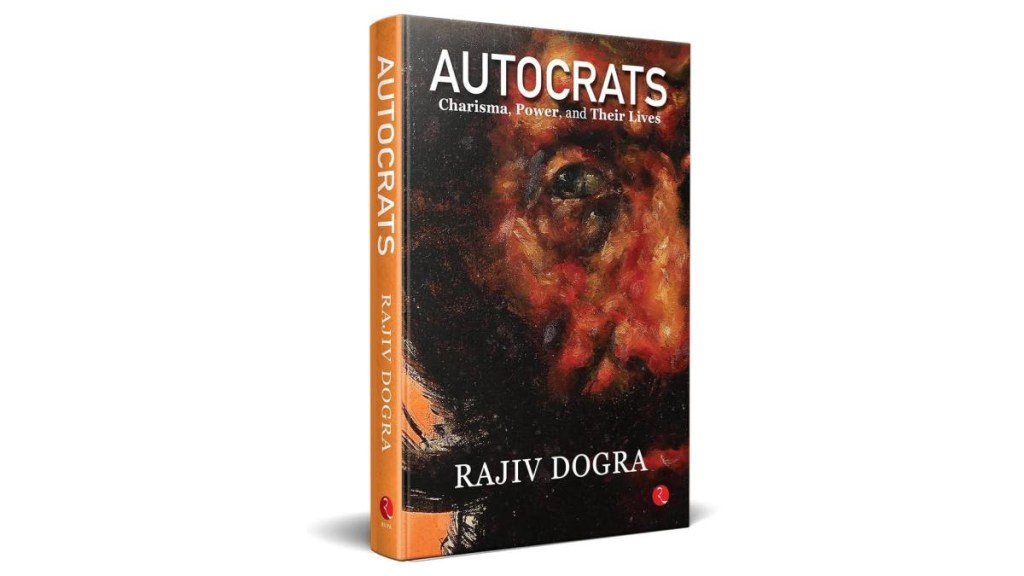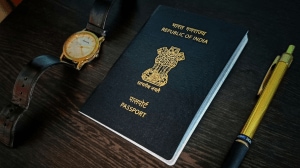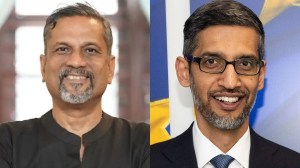By Ritika Sharma
In a world that is increasingly witnessing the rise of authoritarian regimes and downslide of democratic institutions across polities, civil rights are losing currency and people their autonomy. To address the crisis, former Indian diplomat Rajiv Dogra brings attention to the root cause, rather the most obvious, blatant causes of unrest in countries—autocratic leaders.
In his new book, Autocrats: Charisma, Power and Their Lives, Dogra walks us through authoritarian regimes, both ancient and present, across nations and across different styles of autocrats who continue to thrive in the face of democracy.
Divided in seven parts and 29 chapters, the book has some crucial facets of the dictator—their rise, reign and charisma before the final fall.
Besides analysing authoritarian regimes worldwide, the book also delves into the quintessential question of why both young and old democracies have failed peoples’ expectations worldwide. Incidentally, amid this, it is an authoritarian state of China that has managed to outshine several famous democracies on most indices. If it leads to the question about the efficacies of a democratic polity in post-colonial societies, it also reflects the raging inequality in these countries that propels xenophobic public anger and the resultant shift to dictatorial leaders who sell people the pipe dream of a glorious past.
Having served at places like Pakistan, Italy and Romania, Dogra brings his vast experience to unravel the phenomenon of dictators. He underlines that even Roman emperors were susceptible to appeasement as they dangled breads and circuses (Panem et circenses) to distract masses from real problems. The ruler always knew how to hoodwink the ruled.
He also presents a well-argued comparison between the styles of charismatic leadership and the cult of personality. What we witness at present is the rise of demagogues who pull crowds, only to shut the doors on them once they occupy power.
Autocrats remain wary of intellectuals, suspicious of new ideas, and dismissive of oppositions.
However, a charismatic leader must not be confused with an autocrat. While the latter remains whimsical, myopic and inaccessible, the former thrives on consistency and engages with dissenters and supporters alike.
The book also dissects the dictatorial tactics of tortures, mass murders and covert actions. To substantiate his point, Dogra gives ample instances of Joseph Stalin, Benito Mussolini and Adolf Hitler and the contemporary Recep Tayyip Erdogan and Kim Jong Un, besides giving examples of lesser-known despots like Daniel Ortega, Enver Hoxha, Nicolae Ceausescu and Kurmanbek Bakiyev. What connects them all is hatred for dialogue and dissent.
In such a system, media becomes another victim and comes under strict surveillance as the leader lives under constant anxiety of a revolt. And thus, malfeasance and fakery are disguised as public relations. If PR firms casting a halo around dictators wasn’t enough, we are now tricked by technology as the new weaponry to usurp sovereignties beyond their borders.
Any account of a dictator’s life is incomplete without their idiosyncrasies. Dogra recounts an outstanding anecdote that begins with the grave of Taimur (Tamerlane) and stretches to the next four centuries intersecting the lives of Nader Shah, Stalin and Hitler.
The book also writes about dictators’ spouses, who, incidentally, are often worse than their husbands, the new-age Lady Macbeths who drive the dictators towards criminality. Episodes on the atrocities and corruption by Elena Ceausescu, Michele Duvalier, Leïla Ben Ali are a reminder to the reader that wherein citizens are handed modicums of prosperity, the ruler’s family swindles national reserves.
Dogra also reminds us why the supposedly great democracies are equally guilty of the recklessness that is the trademark of an autocrat. Many of the current ills of the planet can be attributed to the US intervention in the autocratic regimes in the name of bringing ‘justice and democracy’. The tragedy of Middle East can be seen through the unethical deeds of a superpower.
The book, thus, narrates world history through its dictators and asks the unsettling question—how do autocrats sustain themselves? If the autocrat remains unmasked, what drives his longevity.
It is the populace that must share the burden. International sanctions and online censure will not suffice. The citizen must rise. A quote from Auschwitz-Birkenau State Museum about Nazi Germany sums up his argument—“It didn’t start with the gas chambers. It started with one party controlling the media. One party deciding what is the truth. One party censoring speech and silencing opposition…It started when good people turned a blind eye and let it happen.”
Sadly, similar words can be written about several contemporary societies.
Author Ritika Sharma is an independent scholar.







